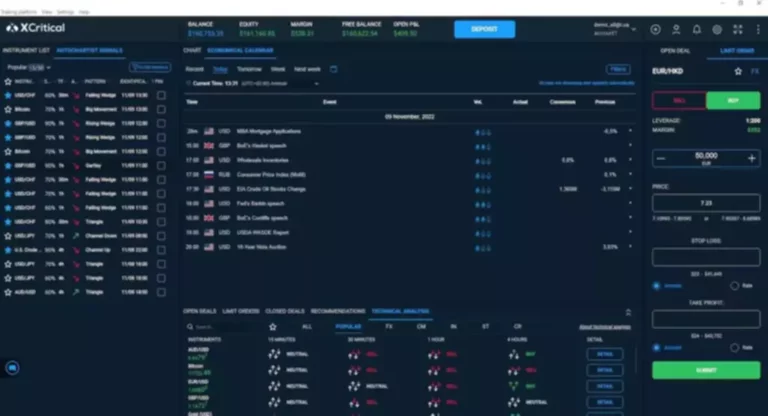Private blockchains offer public and private blockchain difference extra control, quicker transaction speeds, and customization, which makes them appropriate for businesses and organizations needing restricted access and privateness. A personal blockchain works in a restrictive surroundings like a closed network or is under the control of a single entity. While it operates like a public blockchain community in the sense that it uses peer-to-peer connections and decentralization, this kind of blockchain is on a much smaller scale.
Advantages Of Public Blockchain
It renders the blockchain tamper-evident, delivering the key power of immutability. It additionally removes the potential of tampering and builds a ledger of transactions with other network members that are reliable. The blocks from a chain of knowledge are moved from one place to another.
Public, Private, And Permissioned Blockchains Compared

As a lot as we see openness as an advantage, it’s just one other shortcoming of the public blockchain, which implies little to no privacy for transactions. They work based mostly on permissions and controls, which prohibit participation within the network. Only the entities taking part in a transaction may have knowledge about it and the opposite third parties or stakeholders will not be able to entry it. The access mechanism might range; the prevailing individuals might resolve future entrants, a regulatory authority could issue licenses for participation, or an association could make future selections. At Dock, we by no means put Verifiable Credentials or personally identifiable information on our public blockchain. Instead, we use decentralized identifiers (DIDs) to enable users to securely store data on their private gadgets and organizations to immediately confirm the authenticity of their credentials.
Public Blockchain: A Permissionless Blockchain Network
In a private blockchain, it is established ahead of time who’s qualified to affix the consensus and who is not. Participants in a public blockchain, then again, are free to interact and take use of the system’s benefits; there are not any limits on coming into the consensus process. In order to realize a consensus, each node within the community should solve a resource- intensive, complex drawback to be able to keep the sync.

The disadvantages of permissioned blockchains mirror these of private and non-private blockchains, relying on how they are configured. One key drawback is that as a outcome of permissioned blockchains require internet connections, they are susceptible to hacking. By design, some may use immutability methods corresponding to cryptographic security measures and validation by way of consensus mechanisms.
Each block is cryptographically sealed with particular protocols to withstand tampering. Data throughout the block is linked using a cryptographic hash value, making it time-stamped and tamper-proof. A. Public blockchains face challenges associated to limited scalability due to consensus protocols, and high energy consumption, especially in PoW-based systems.
For closed, safe networks with limited entry, a non-public blockchain could be the better possibility. A private blockchain, however, is a closed network where access is restricted. It is typically used by companies and organizations for inner operations. Only licensed users can take part, and the controlling entity manages the community. A public blockchain is an open, decentralized network that anybody can access and take part in.
- It is extremely safe, scalable, and private, managed by a non-public authority.
- But this sort of ledger cannot be amended or altered once finalised.
- In a consortium blockchain, every participant has an equal say in the governance and operation of the network.
- This encryption helps protect in opposition to data breaches and unauthorized access.
A public blockchain is a decentralized and transparent network open to anybody. It is a distributed ledger that data transactions throughout a network of computers and is secured through cryptography. On public blockchains, the consensus mechanisms used are Proof-of-Work (PoW) and Proof-of-Stake (PoS).

Though the information can be viewed by everyone, the data cannot be modified. Assess your corporation requirements, including privateness, scalability, management, and regulatory compliance necessities, to discover out the appropriate blockchain network. Public blockchain network examples embrace Bitcoin, Ethereum, and Litecoin, open to anybody for participation and contain transparency in transactions. However, they’ve some key variations that you should be aware of.
Let us contemplate the earlier examples of toddler immunisation to grasp the lactose intolerant case. As acknowledged above, in certain circumstances, blocks can be deleted from the ledger. We already know that when a block gets on the chain, there isn’t any likelihood the block may be amended, let alone, be deleted. Transactions to this expertise are irreversible, and that is an important function of blockchains. If an individual with intentions of committing fraud enters into a transaction; it is extremely difficult for regulatory authorities, officers, courts, and so on. to hint the criminal. Even if the wrongdoer is identified, the execution of the judgment gets tough.
They are suitable for businesses that require more management over the community, similar to banks or healthcare suppliers. Blockchain is a distributed ledger technology that permits safe and transparent transactions with out the need for intermediaries. It is essentially a database that shops a sequence of transactions or blocks, linked together in chronological order. Each block accommodates a singular cryptographic hash that serves as a digital fingerprint, making it tamper-proof and immutable. The network can be gradual, and corporations can not prohibit its entry or use.
Read more about https://www.xcritical.in/ here.
